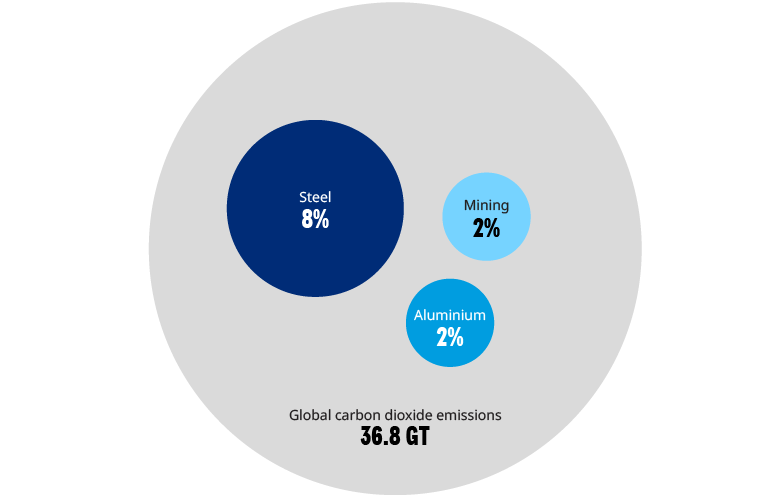The pace of transformation in hard-to-abate industries must accelerate to meet net zero by 2050. Heavy industry faces a unique challenge as demand for products — many fundamental to the global green transformation itself — continues to rise.
With steel, aluminum, and mining collectively contributing to around 12% of global carbon dioxide emissions, business leaders in these carbon-intense industries are faced with a once-in-a-generation opportunity to innovate and collectively shape the transition to a more sustainable future. However, decarbonizing these industries comes with numerous challenges — from securing access to renewable energy at scale and competitive cost to navigating evolving regulatory frameworks.

Note: mined material in scope include coal, copper ore, usable iron ore, nickel, zinc, and bauxite and figures exclude fugitive methane emissions.
To help these industries progress their journey towards net zero, the Sustainable Markets Initiative’s Energy Transition Task Force – chaired by Oliver Wyman’s CEO, Nick Studer – has launched a new guide that highlights pathways and options for decarbonising hard-to-abate industries.
Developed by UAE-based clean energy company, Masdar, and supported by Oliver Wyman, the guide emphasises the critical role of all sectors in the global economy for successful decarbonisation. Governments should provide regulations, incentives, and frameworks to accelerate decarbonisation. Financial institutions play a crucial part in allocating capital to green investments, even when immediate commercial viability is uncertain. Industry partners can contribute by negotiating long-term agreements for low-carbon products, securing access to green energy, and collaborating across sectors to advance decarbonization technologies. Customers, especially corporations, can drive demand for low-carbon products, enabling industries to invest in decarbonization technologies and achieve profitable commercial scale.
Ultimately, the guide, and the decarbonization initiatives identified as highly relevant, exemplify that cross-industry cooperation can have a strong positive impact.


